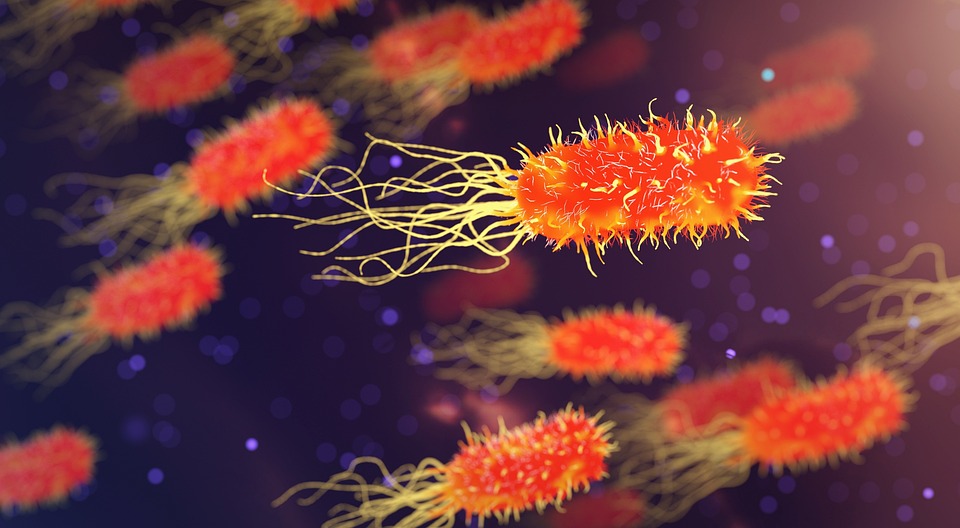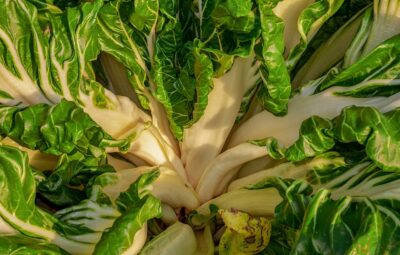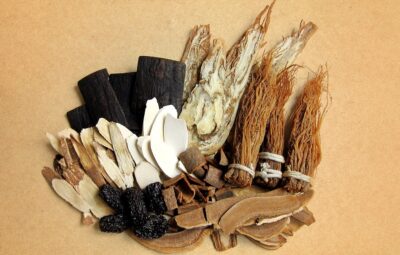Medical treatments that effectively kill yeast and bacteria are available. If the conditions that make someone vulnerable to pathogens are not corrected, the pathogens will often return.
Women frequently encounter yeast infections in their vaginal tissues. Tens of millions of women suffer from chronic urinary tract bacterial infections every year.
Probiotics, which are found in yogurt and other fermented foods, protect against chronic infections, according to new studies.
PROBIOTICS AND VAGINAL INFECTIONS
Probiotics are microorganisms that have beneficial effects on human health, such as preventing vaginal infections, maintaining optimal pH balance, supporting immune function, and preventing harmful microbes from thriving.
Probiotic bacteria have many health benefits, and scientists have found that two specific species have benefits for female health. GR-1 and RC-14 are powerful probiotics that can help prevent and fight bacterial and fungal vaginal infections.
Bacteria: Friends or Foes?
We usually think of bacteria as our enemy. It is true that many species, such as those that cause tuberculosis or anthrax, can do a lot of damage. Although some bacteria are harmful, there are also many that are beneficial, especially those that produce lactic acid. There is a positive relationship between humans and some types of bacteria.
Although we are born with sterile bodies, they are quickly colonized by microorganisms. The bacteria that are good for you quickly start to populate areas where your body tissues connect with the outside world, like your mouth, digestive system, and vagina. When good bacteria are in charge, optimal health is achieved and maintained. The useful bacteria in our guts help to keep the lining of our intestines healthy and strong, and new evidence suggests that they might also help to improve our immunity.
The good bacteria are not only good for themselves, but they also help to prevent other harmful bacteria from growing. They do this by taking up space and by changing the environment to make it less hospitable for harmful bacteria. The microflora in an individual’s body is made up of trillions of cells. These friendly microorganisms help the body by interacting with our own cells, providing vitamin K and folic acid, and helps modulate immunity.
Lactobacillus is a Girl’s Best Friend
A similar process of colonization also helps protect against various vaginal infections in females. Friendly bacteria help to maintain a healthy balance of microorganisms in the vagina by excluding harmful bacteria and other pathogens.
Certain strains of Lactobacilli produce substances like lactic acid, hydrogen peroxide, and bacteriocins, which can prevent the growth of bacteria linked to bacterial vaginosis. These helpful bacteria may stop bad bacteria from causing vaginosis.
There are many things that can throw off the balance of good microflora. The things that can trigger rosacea flare-ups include taking antibiotics, changing your diet, smoking cigarettes, having sex, and experiencing fluctuating stress levels. Perturbations may lead to the overgrowth of pathogens, causing yeast infections or bacterial vaginosis.
Bacterial vaginosis is a vaginal infection that is usually accompanied by an odor, discharge, pain, and itching or burning. It is the most common vaginal infection in women of childbearing age. An overgrowth of anaerobic bacteria, such as Gardnerella, Mobiluncus, Bacteroides, or Mycoplasma, causes bacterial vaginosis. This condition is caused by prior infection with the herpes simplex virus type 2, having multiple sexual partners, and low levels of Lactobacilli.
Bacterial vaginosis is not only a nuisance but also increases the risk of developing more serious conditions such as pelvic inflammatory disease or sexually transmitted infections such as Chlamydia or gonorrhea. Bacterial vaginosis may also increase the risk of complications, such as preterm labor, during pregnancy.
Vaginal Microflora Disorders Exceptionally Common
One report claims that there are more than 300 million cases of urinary tract infection, bacterial vaginosis, and yeast vaginitis worldwide every year. Another report claims that yeast infections alone affect 75% of American women during their reproductive years, and 40-50% of these women will endure recurrent episodes, while 5-8% experience chronic Candida infections.
The standard treatment for a Candida yeast infection is either an oral antifungal agent, such as itraconazole or fluconazole, or a vaginal cream or suppository, which may require multiple applications. Bacterial vaginosis is commonly treated with medications such as metronidazole or clindamycin. Recurrent infections of this type can be difficult to manage and cause discomfort, inconvenience, and psychological distress.
It is clear that most adult women could benefit from preventive protection against infections, given the high prevalence of these infections and the alarmingly high rate of recurrence.
Prevention Preferable to Treatment
There are certain types of bacteria that are good for protecting your vaginal and intestinal microflora. This resistance against unfriendly yeast and bacteria growth is important.
There are different types of bacteria classified as acid-loving or acidophilus bacteria. Clinical trials have shown that bacteria of the genus Lactobacillus, when consumed orally daily, are effective at maintaining healthy vaginal microflora.
Lactobacillus is a type of bacteria that is commonly found living in the vagina. Studies have shown that certain species of Lactobacillus are capable of inhibiting the growth of pathogenic organisms, such as Gardnerella vaginitis and Candida albicans. Inhibiting unwelcome fungi from adhering to the lining of the vagina prevents yeast infection. A recent study found that women with high numbers of Lactobacilli in the vagina were less likely to harbor yeast.
L. rhamnosus (GR-1) and L. reuteri (RC-14) are two specific Lactobacillus species that excel in colonizing the vaginal area and preventing other bacteria and fungi from taking hold. The research from 2001 conducted at the University of Western Ontario showed that taking a specific strain of Lactobacillus orally every day for 28 days can help to restore and maintain a normal urogenital flora for women.
A study done more recently looked at the potential of using these oral probiotics to treat bacterial vaginosis along with the standard antibiotic therapy. The study enrolled 125 premenopausal women with diagnosed bacterial infections of the vagina.18 Subjects were prescribed standard antibiotic therapy consisting of metronidazole500 mg) taken twice daily for one week. Subjects were randomly assigned to a twice-daily dose of oral probiotics containing GR-1 and RC-14, or an inactive placebo, for an entire month, beginning on the first day of treatment with the antibiotic.
Home Remedies for Yeast Infections
There are various home remedies that one can use to get relief from yeast infection symptoms like burning and itching. There is stronger evidence that they may help prevent yeast infections from occurring in the first place, even though there is no proof that they help treat the overgrowth of Candida yeast once it has occurred.
Before attempting any at-home remedies, you should check with your healthcare provider to ensure that you are actually dealing with a yeast infection and not bacterial vaginosis or a urinary tract infection.
Baking Soda
Baking soda may help with yeast infections. Researchers have long found that sodium bicarbonate, or baking soda, can help with other health conditions, including digestive problems and oral hygiene. Some recent studies have shown that baking soda may also help improve exercise performance.
Some studies also have shown sodium bicarbonate to prevent Candida yeast growth.2 Baking soda solution has a comparatively high (alkaline) pH, while the vagina is an acidic environment. Baking soda baths can change the acidity levels in the vagina, making it less inviting for yeast and other types of infections to grow.
The researchers are continuing to develop products, such as a sodium bicarbonate gel, that can be used to treat vaginal yeast infections, which are common.
Yogurt
5 Plain yogurt with live probiotic cultures may help prevent future yeast infections. Probiotics are live microorganisms that offer health benefits, particularly for the digestive system.
You can help to restore your gut flora back to a healthy balance by eating probiotic-rich foods. This will kill bad bacteria that lead to disease and increase good bacteria.
One of the common side effects of taking antibiotics is developing a yeast infection. This is because antibiotics can kill the bacteria in the vagina that usually stop the growth of yeast. If the number of good bacteria decreases, yeast growth can increase uncontrollably and cause a yeast infection.
Research suggests that consuming probiotic-rich foods, such as yogurt, may help to prevent yeast infections. There is no definitive answer as to whether or not eating yogurt can cure a yeast infection. More research needs to be conducted in order to come to a conclusion.
Boric Acid
Boric acid is a natural compound that has antifungal effects. It contains probiotics and antioxidants to help the body restore its supply of good bacteria.
Boric acid has been shown in studies to be a safe and effective alternative treatment for yeast infections, especially when traditional antifungal medication is not effective. If you have been prescribed antifungals several times for chronic yeast infections, boric acid may be helpful. Around 10% of people who have vaginas will have three or more yeast infections in one year.
Boric acid is a substance that is typically found in the form of a vaginal suppository. This means that it is meant to be inserted into the vagina and should never be ingested orally. You should follow the package instructions and speak to your healthcare provider if your symptoms do not improve.
Coconut Oil
Coconut oil is effective in preventing the overgrowth of bacteria in the body. A study in 2018 found that coconut oil is effective at killing microorganisms when dissolved in water.
Avoiding douching may help prevent yeast infections since these occur when the bacteria and yeast in the vagina become out of balance.
Coconut oil can be used in many different ways. You can take it by mouth or mix it into foods such as oatmeal or baked goods. Coconut oil is being researched for its potential to treat yeast infections. However, more research is needed to determine how effective it is.
Tea Tree Oil
Tea tree oil has been shown to be effective at fighting Candida albicans. A study from 2020 found that tea tree oil was good at fighting yeast that was resistant to antifungal medications.
If you’re interested in using tea tree oil as part of your treatment plan, have a chat with your gynecologist. The best way to use essential oils is to dilute them and apply them topically. Do not place them directly on or in the vagina, and do not consume them by mouth.
Apple Cider Vinegar
Apple cider vinegar can be used to help fight both fungal and microbial infections. This means that it can help control the growth of both yeast and bacteria in the body.
Apple cider vinegar can be used to treat yeast infections that do not respond to traditional treatment.
Apple cider vinegar seems to prevent Candida from sticking to smooth surfaces. Preventing a yeast infection may be as simple as avoiding things that disrupt the vaginal’s natural pH balance, like douching. When the pH balance is thrown off, it can create an environment that’s conducive to yeast overgrowth.
Apple cider vinegar has a variety of benefits, so mixing it into a large glass of water and drinking it each morning is a good way to start your day. Don’t attempt to use vinegar directly on your vagina.
Unproven Treatments
Home remedies for yeast infections may be worth trying. You can improve your health by adding apple cider vinegar or yogurt to your diet.
You should avoid putting food and supplements near your vagina. An internet search will produce many results for unproven yeast infection treatments that could create more issues.
When To Call Your Healthcare Provider
Home remedies for yeast infections should work to clear the infection within a week, as is the case with most over-the-counter yeast infection treatments. Still experiencing symptoms? See your healthcare provider.
Your practitioner may be able to prescribe Diflucan (fluconazole), an antifungal oral medication. Diflucan is usually effective in treating a yeast infection in a single dose. If you’re not seeing results from your yeast infection treatment, it’s possible that you don’t actually have a yeast infection.
Conditions such as bacterial vaginosis, sexually transmitted infections, and skin disorders can sometimes cause symptoms that are similar to those of a yeast infection. Some of these infections can cause serious problems if they are not treated.
If you are regularly getting yeast infections, you should see your gynecologist. If you have a fungal infection that does not go away, you may need to take antifungal medicine for a long time to eliminate the infection and prevent it from coming back.







